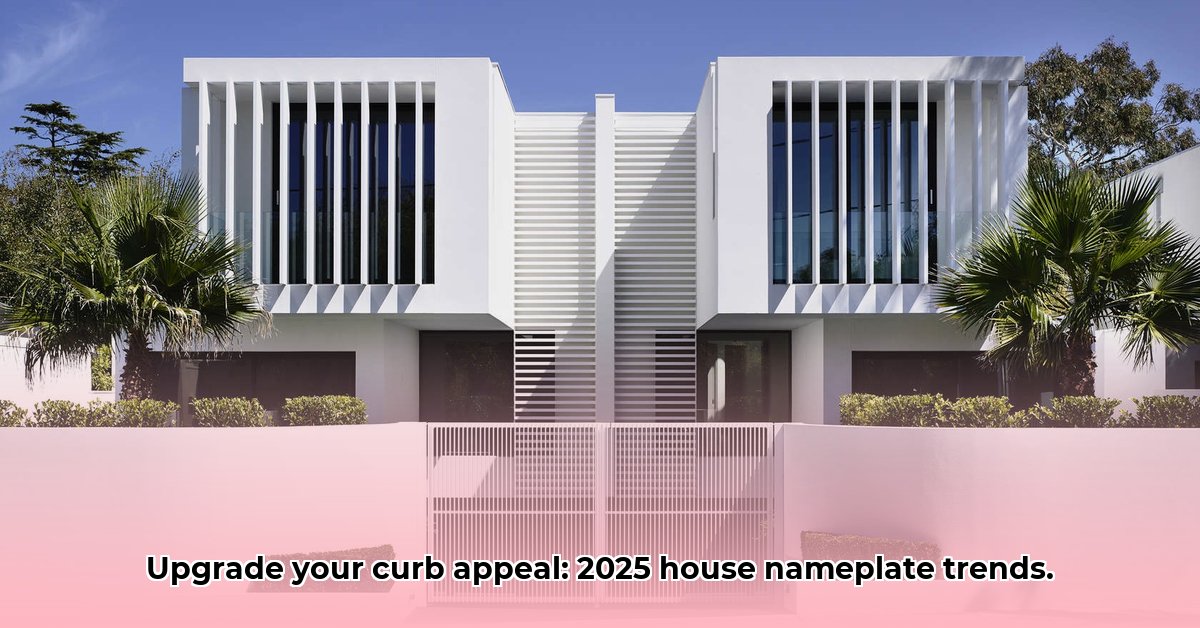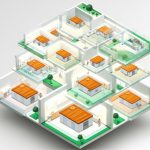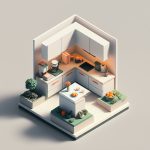Your house nameplate offers a prime opportunity to showcase your personal style before guests even reach the front door, and it’s more than just a marker. For more exterior design inspiration, check out modern home design ideas. This guide explores modern house nameplate trends, helping you select the perfect one, from choosing materials like wood, metal, or acrylic, to optimal placement and installation tips. We’ll explore various designs while also pointing out common mistakes to avoid, ensuring your choice looks fantastic for years to come. Let’s discover the ideal nameplate to reflect your home’s personality!
Modern House Name Plate Design
Selecting a house nameplate is akin to choosing jewelry for your home – a small detail, but with significant impact. Aim for a blend of style, curb appeal, and durable practicality to withstand the elements. What options do you have available?
Material and Design Choices: A World of Possibilities
The chosen material dramatically impacts your nameplate’s look and feel. A sleek steel plate offers a modern contrast to the warmth of a rustic wooden one. Durability is also key, securing a great appearance for years. Popular options include:
- Acrylic: Known for its lightweight nature and customization options.
- Metal (Steel, Brass, etc.): Delivers durability and a classic finish.
- Wood: Offers warmth and a natural aesthetic.
Consider also glass for elegance, or stone for a luxurious, heavy-duty feel. Personalized resin art nameplates are trending, offering unique, eye-catching designs.
Here’s a breakdown of the variety of options:
| Material | Pros | Cons |
|---|---|---|
| Acrylic | Lightweight, colorful, easily customized, affordable | Less durable, prone to scratches |
| Metal (Steel, Brass, etc.) | Durable, sleek, classic, many finishes available, weather-resistant | Can rust (unless treated), potentially more expensive |
| Wood | Warm, inviting, unique grain, natural look, can be locally sourced and eco-friendly | Needs regular maintenance, weather-sensitive |
| Glass | Elegant, modern, customizable lighting options, offers a sleek, minimalist aesthetic | Fragile, needs careful handling |
| Stone | Durable, high-end, unique texture, offers a timeless, natural aesthetic | Very heavy, expensive, professional installation needed |
| Resin | Highly customizable, vibrant colors, durable, can incorporate various decorative elements | Can be expensive depending on complexity, may yellow over time if not UV protected |
Installation and Placement: Making Your Mark
Strategic nameplate placement is key alongside its material. Visibility from the street should complement your home’s architecture with a matching style, whether minimalist or ornate. Consider the principles of Vastu Shastra, which suggests placing the nameplate on the left side of the main entrance for positive energy.
Subtle LED lighting can enhance the nameplate, especially at night, adding elegance and visibility. How do you install the perfect nameplate?
Steps to a Perfect Installation:
- Measure Twice, Install Once: Accurate measurements prevent crooked installations.
- Clean Slate: Cleaning mounting surfaces ensures a strong bond.
- Securely Attach: Using correct fasteners per manufacturer’s instructions is critical.
- Level and Secure: Ensuring nameplate is level prevents shifting or falling.
For illuminated nameplates, consult an electrician to ensure proper wiring and safety.
Style and Trends: Reflecting Your Home’s Personality
Modern nameplate design highlights clean lines, minimalist aesthetics, and bold typography. Favor simple, elegant fonts over ornate designs. Geometric shapes and personalized elements, such as family names, are currently trending. Illuminated nameplates with LED backlighting are also popular, enhancing visibility and adding a modern touch. Is the goal to complement the overall style of a rustic, modern, or contemporary home with a unique touch?
Cost and Maintenance: Balancing Beauty and Budget
Nameplate prices vary widely. Simple metal plates are budget-friendly and require minimal maintenance. Custom-designed glass nameplates with LED lighting will require a larger investment and potentially more care. High-quality nameplates last longer and require less upkeep, adding long-term value to the property. Considering your budget against your desired aesthetic helps maximize this long-term investment. Don’t you want to research your home’s style combined with a material that enhances your home’s curb appeal?
How to Choose the Best Material for a House Nameplate
Key Takeaways:
- Material choice significantly impacts both aesthetics and longevity of modern nameplates.
- Consider your home’s architectural style aligning to the surrounding environment.
- Durability and weather resistance are crucial for outdoor nameplates.
- Customization options enhance individuality of your modern aesthetics.
- Budget considerations play a key role in material selection for a modern look.
- Local regulations may influence size and style choices for a modern design.
Choosing the Right Material: Durability Meets Design
Selecting a stylish nameplate can feel overwhelming with so many material options. Think of it like choosing durable yet stylish clothing that reflects your personal taste. How can you match the materials to your needs?
Metal Marvels: Stainless Steel, Aluminum, and Brass
Metals provide sophisticated, lasting options. Stainless steel offers rust and scratch resistance for longevity. Aluminum is a lighter, budget-friendly, alternative. Brass adds vintage charm, gaining a patina over time. Will your home’s style suit steel, or does it need the warmth of brass?
Acrylic Appeal: Modern and Affordable
Acrylic offers a contemporary feel with customizable colors and finishes. Its lightweight nature facilitates easy installation, but it scratches easily and may not be suitable for high-traffic areas. Silver acrylics offer a modern twist with a sleek, reflective surface.
Wood Wonders: Natural Beauty with a Trade-off
Wood adds rustic charm, with unique grain and warmth, but requires maintenance to address weathering and insects. Teak wood is a popular choice for its durability and rich color. Is this practical for your climate?
Glass Glamour: Elegant but Delicate
Glass nameplates are elegant and reflect light beautifully, but are fragile and carry potential safety hazards if broken. Tempered glass is a stronger, safer option. Can this be a hazard to young children?
Stone Statements: Luxurious and Long-lasting
Stone nameplates, such as granite or marble, offer a luxurious, timeless look. They are incredibly durable, but also heavy and require professional installation.
Resin Revolution: Art Meets Function
Resin nameplates allow for unique, artistic designs. They can incorporate various decorative elements, such as dried flowers, glitter, or metallic flakes.
Making Your Choice: A Step-by-Step Guide
- Assess your home’s style: Does your home lean towards modern, traditional, rustic, or minimalist?
- Consider weather conditions: Extreme weather dictates the material durability you’ll need.
- Determine your budget: Metals and stone tend to be more costly than acrylic or wood, so compare prices.
- Think about maintenance: Some materials require more attention than others, so know what the upkeep will be.
- Check local regulations: Your HOA or local building codes may restrict nameplate sizes, placement, or materials, so be sure to check.
- Consider Vastu Shastra: If you follow Vastu principles, research the recommended colors and placement for your nameplate.
Material Comparison Table
| Material | Pros | Cons | Cost | Maintenance |
|---|---|---|---|---|
| Stainless Steel | Durable, weather-resistant, sophisticated, modern | Expensive | High | Low |
| Aluminum | Durable, lightweight, budget-friendly, versatile | Less resistant to scratches than stainless steel | Moderate | Low |
| Acrylic | Affordable, customizable, wide color range, lightweight | Prone to scratches, less durable | Low | Low |
| Wood | Natural, rustic charm, eco-friendly options available | Requires frequent maintenance, susceptible to weather and insects | Moderate | High |
| Brass | Durable, develops unique patina, adds a vintage touch | Can tarnish, relatively expensive | High | Moderate |
| Glass | Elegant, reflective, modern | Fragile, potential safety hazard | High | Moderate |
| Stone | Luxurious, timeless, incredibly durable | Very heavy, requires professional installation, expensive | High | Low |
| Resin | Highly customizable, vibrant colors, durable, unique artistic designs | Can be expensive depending on complexity, may yellow over time if not UV protected | Moderate to High | Low |
Choosing the right material ensures your address marker enhances curb appeal for years. Isn’t personal touch combined with a durable material what you want?
Modern House Nameplate Illumination Techniques for Enhanced Visibility
Key Takeaways:
- Enhanced Visibility: Illuminated nameplates significantly improve nighttime visibility.
- Security Benefits: Increase security with brightly lit numbers that deter intruders.
- Aesthetic Appeal: Stylish illumination adds modern elegance to your home’s curb appeal.
- Diverse Customization Options: Wide selection of material options such as acrylic, metal, and
- Modern Butcher Block Kitchen: Warmth and Style with White Cabinets - January 6, 2026
- White Cabinets with Butcher Block Countertops: A Kitchen Classic - January 5, 2026
- White Kitchen With Butcher Block Countertops: A Warm, Inviting Design - January 4, 2026










